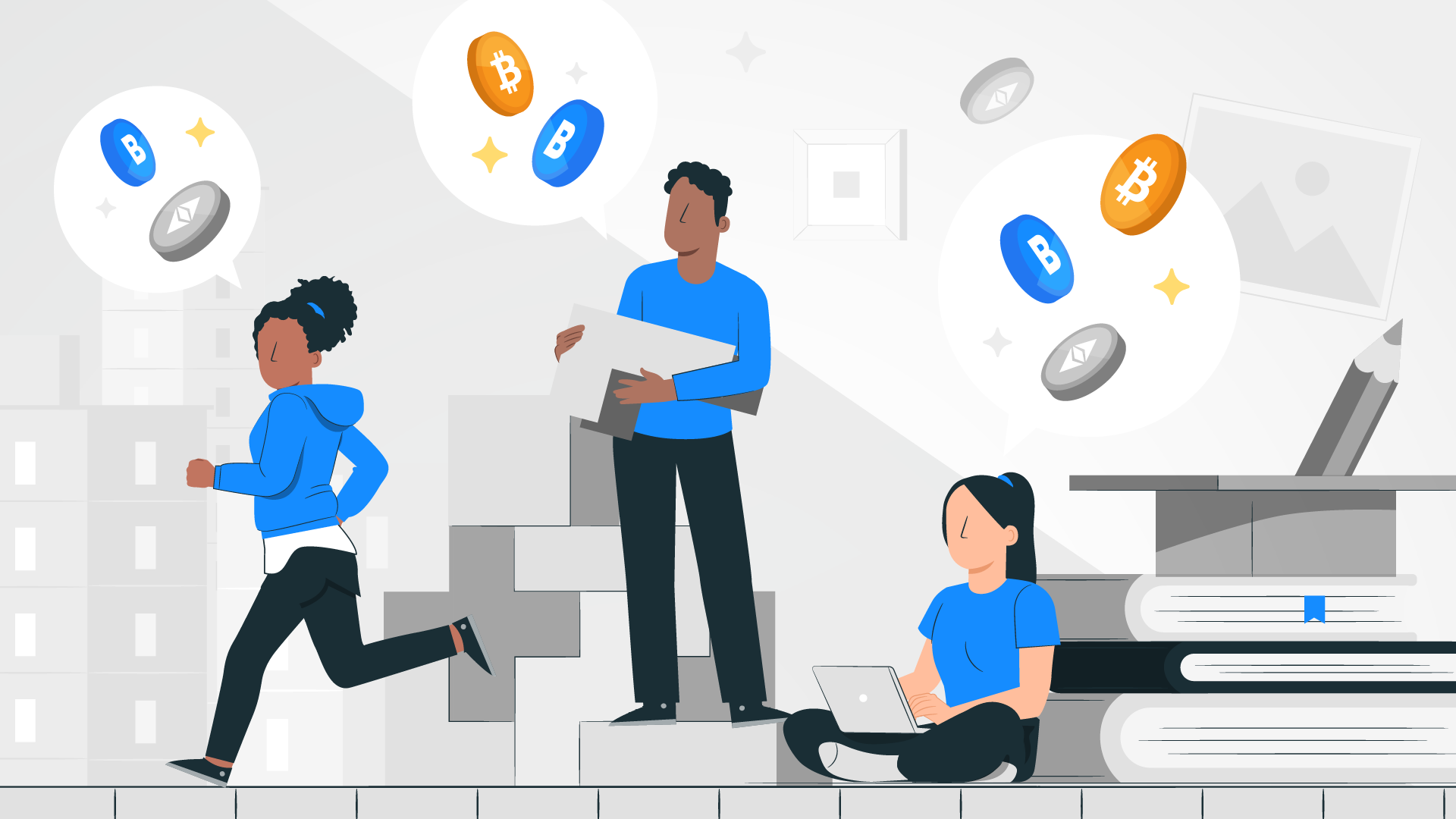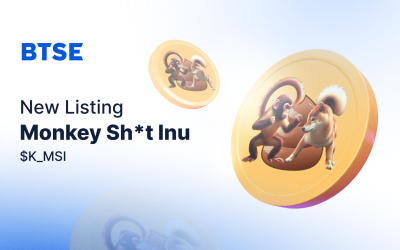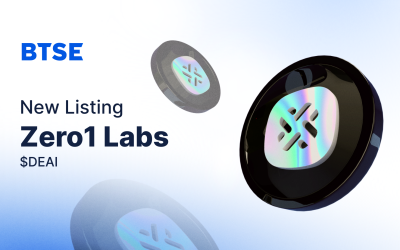Written by Antonio Liao, Researcher at BTSE
At a Glance:
- Walking, jogging, gaming, learning, or even sleeping cannot be more routine to us, and the growing popularity of Web3 and DeFi even allows us to earn crypto by doing these basic activities.
- Based on the differences in each app’s reward mechanism, some apps, such as STEPN and Axie Infinity, have high entry barriers that they require holding NFTs for participation. Others, such as L2E and Browse-to-Earn, do not have prerequisites to participate.
- In addition to security and speculative risks, each to-earn genre has its own challenges, whether it is the replayability of P2E games or China’s tracking ban for M2E apps. However, these challenges have not hindered the proliferation of to-earn apps and concepts, making the space one of the most innovative and lucrative in DeFi.
Play-to-Earn: Decentralizing Gaming
One of the earliest and the most popular “X-to-earn” models is Play-to-Earn (P2E), aka GameFi. As the name suggests, P2E offers gamers the opportunity to earn rewards by playing blockchain-based games, which can vary from RPG to FPS games.
Unlike in-game rewards (i.e. skins, weapons, gears) that we often see in popular games such as Rocket League or League of Legends, P2E-generated rewards such as crypto and NFTs hold real-world value. For example, the popular Ethereum-based P2E game, Axie Infinity, lets its players mint NFT- based Axies, which are in-game virtual creatures unique for each player, and trade them with ETH. Meanwhile, gamers can also earn by winning fights and completing quests or staking Axie Infinity Shards (AXS), a governance ERC-20 token they obtained throughout the game, to earn rewards.
For sports fanatics, P2E is a vibrant industry that caters to all appetites. Sorare is a web-based fantasy football game that integrates traditional fantasy football with blockchain-enabled P2E features, in which players are able to earn, upgrade, and resell their Ethereum-based NFTs (football cards) through competitions or on the marketplace for ETH.
While earning real-life tokenizable and monetizable rewards is undoubtedly the most enticing aspect of P2E, many Web3 natives also look to P2E/GameFi to decentralize the gaming experience. The essence of the entire P2E experience is to allow players to monetize their rewards, giving them ownership over their characters and rewards, a feature that never existed in traditional gaming.
However, as lucrative as P2E may seem, the industry is still rife with speculative risks, scams, and attacks that have resulted in hefty losses for players and developers. Many have also pointed out P2E’s dependence on a continuous influx of new players to keep the in-game economy sustainable, which has been a challenge for many P2E startups, as they are required to constantly update and introduce new gameplay experiences to attract new users and retain existing ones.
Move-to-Earn: The New Crypto Craze
Given the long history of the in-game earning model, the concept of P2E is hardly considered to be innovative at its core, but how about move-to-earn (M2E)? As you are probably aware, the crypto space has recently seen the parabolic rise of M2E, a GameFi-like to-earn model that rewards users for exercising, completing fitness challenges, or simply walking.
When talking about M2E, it is impossible not to mention STEPN, the Solana-based platform that pioneered and popularized the M2E model. Having garnered over 300,000 daily active users in just over two months, STEPN today has a market cap larger than that of its competitors combined, and its native token, GMT, was recently trading 17 times the price it started back in March.
In order to start earning with STEPN, you are required to lease or buy a customizable NFT sneaker, whose price can vary based on its attributes, type, level, and quality. Currently, the starting price for a sneaker is roughly 12 SOL. Once you have a sneaker, things get a lot simpler, and if you’ve ever used Fitbit or Google Fit, STEPN’s tracking mechanism is quite similar, except you get rewarded with GMT and GST for achieving your goals instead of an underwhelming notification saying, “Great job, you’ve achieved your goal today!”
Of course, if you find the entry barrier into STEPN too high, need not worry, because the success of STEPN has attracted a horde of M2E apps to the space, offering users a plethora of options. While most M2E reward mechanisms and their tokenomics are largely similar, up-and-coming apps, such as Step.app and Genopets, seek to offer different types of gameplay and a more community-driven experience.
Unlike P2E apps, M2E users are able to participate in different exercising modes, let it be co-op or solo, to gamify the fitness experience. That said, while M2E apps also require a stable influx of new users to sustain their platforms and keep the values of their tokens afloat, M2E apps can tap the fitness user base that is overwhelmingly larger than that of P2E.
Learn-to-Earn: Education and Crypto for All
As crypto adoption becomes more prevalent than ever, it is still believed that the lack of education remains the main entry barrier into crypto. As part of the effort to unlock the potential of crypto adoption, industry players ranging from exchanges to databases are offering Learn-to-Earn (L2E) programs.
Although L2E, P2E, and M2E all allow participants to earn crypto by completing given tasks, L2E’s reward mechanism and goals are fundamentally different from those of the other two. With no initial investment required, L2E programs (not apps) do not pose any entry barrier to participants, who are typically first-time or inexperienced crypto users. The only prerequisite to access L2E programs is usually activating a wallet with the exchange offering the program, which would require passing the full KYC verification.
Depending on the L2E program provider, there is a myriad of cryptos to learn about and tasks to complete, based on preferences and needs. Most of the time, participants will need to take a quiz to complete the course to qualify for rewards. For example, on the popular crypto and exchange tracking site CoinMarketCap, its L2E program offers participants opportunities to be rewarded in the crypto they learned about, which can be any token from TRX to NEAR.
Honorable Mentions
While P2E and M2E are the two most prominent to-earn apps, the DeFi space, as always, is never short of new ideas. Here are some honorable mentions:
Similar to M2E, Sleep-to-Earn (S2E) is a niche app inspired by M2E’s reward mechanism through healthy living. One of the earliest S2E apps is Sleep Ecosystem, which is catered to the insomnia market, according to its launch announcement. As simple as it sounds, the BNB Chain-based Sleep Ecosystem uses its track to track the hours its user sleeps, and it will reward the user in its native token – $SLEEP – to the user based on the hours slept. A user has the option to stake $SLEEP to earn $BUSD.
Browse-to-Earn is another project that is slowly gaining traction. Brave Browser, at first glance, is not so different from Chrome or Firefox, but instead of simply being a browser, Brave rewards its users in crypto for opting to view ads. For those who opt to view ads, Brave rewards users in its native token, BAT, which can be exchanged for various services on Brave or saved in earning programs. Other ways to earn BAT through Brave include being a content creator and referral programs. Brave claims there are currently 55 million monthly active users and 1.5 million creators accepting BAT.
Call it absurd or innovative, our last honorable mention, BeeVi toilet, aims to reward its users in digital assets for defecating, while using the excrement to power a building. Piloted in a South Korean university, students are rewarded with Ggool, a non-crypto digital asset that can only be spent on-campus. Meanwhile, the biogas and manure are transformed into energy to power campus buildings.
Looking Ahead
From your typical P2E RPG games to the seemingly hideous “poop-to-earn” BeeVi, to-earn apps have proven to be a lucrative space for both developers and crypto users. The lucrative opportunity also means that there is no shortage of scams, and the risk is only going to increase as the apps’ popularity grows, which is why it is absolutely crucial to DO YOUR OWN RESEARCH (DYOR) before participating in a program.
Just like many other DeFi apps, these to-earn programs often fall under regulatory gray zones, which make them particularly susceptible to regulatory risks, regardless of how popular they are. The recent challenges that STEPN faces in China regarding the IP and GPS tracking bans are the case in point, which has led to STEPN’s native token GMT plunging nearly 40%. The floor price of a STEPN NFT sneaker also dropped from 13 SOL to roughly 8 SOL.
While these to-earn projects may rely heavily on the stable influx of new users to sustain their rewarding mechanisms, the evolving consumer tastes and preferences are pushing these projects and the underlying concepts to mainstream adoption. Given the burgeoning popularity of to-earn apps, we can already see traditional industry players such as Ubisoft, Blizzard, and ASICS tapping into the to-earn space. That said, an AAA P2E game perhaps is not too far away.
Our aim is to create a platform that offers users the most enjoyable trading experience. If you have any feedback, please reach out to us at feedback@btse.com or on Twitter @BTSE_Official.
Note: BTSE Blog contents are intended solely to provide varying insights and perspectives. Unless otherwise noted, they do not represent the views of BTSE and should in no way be treated as investment advice. Markets are volatile, and trading brings rewards and risks. Trade with caution.






